
How many of each dinosaur do you need for it to be happy? How many dinosaurs in a pen is too much for some dinosaurs? Ratings can change based on how complete the Genome is. I will use my genome %’s next to the rating.
Enclosures and Terrain
Click to enlarge…

Instead of using the hard to decipher numbers in the information panel of the dinosaurs, I’m going to classify each dinosaur as a Tiny to Huge exhibit based on their minimum requirements, and list their Tree or Grassland needs as ‘Very Low’ to “Very HIgh’ based on how much of their exhibit they want covered.
- Note 1: Water counts as whatever you put it on. If you fill a area of trees with water, it still counts as Forest. If you fill a open plain with water, it still counts as grassland.
- Note 2: The larger their exhibit, the more forgiving they are on required terrain.
- Note 3: You don’t to make their exhibits as small as I’m showing. I’m just doing this so you know the smallest they’ll accept.
I tested these by putting each dinosaur in the enclosures pictured above and adding trees one by one until they were happy. If they were always in the red for both grassland and forest, i upgraded them to the next size pen. For scale of reference, you can fit a Hammond Creation Lab perfectly inside the Small enclosure.
Exhibit Key:
- Tiny – Example: Anklyosaurs, Struthiomimus and other -mimuses
- Small – Example: Low social Ceratopsians (Pentaceratops, Chasmosaurus, etc)
- Medium – Example: (Suchomimus, Stegosaurus)
- Large – Example: (Tyrannosaurus, Spinosaurus, Mamenchisaurus)
- Huge – None
Terrain Key:
- Very Low – Barely needs any of that terrain type
- Low – Requires a little bit of the terrain type
- Medium – Requires a moderate amount of terrain type
- High – Requires a large amount of the terrain type
- Very High – Majority of the enclosure better be that terrain type
Allosaurus
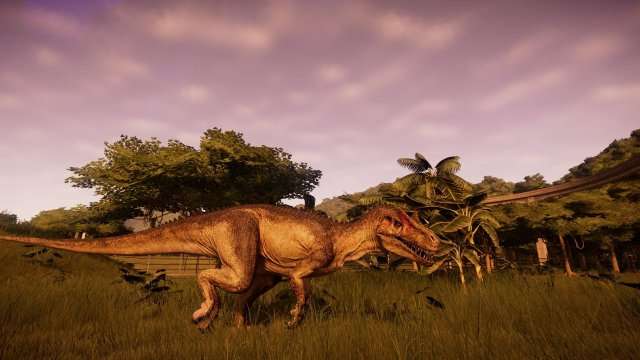
- Base Star Rating: 228 (100% Genome)
- Comfort %: 80%
- Social Minimum: 0
- Social Maximum: 1
- Population Minimum: 0
- Population Maximum: 16
- Enclosure Size: Medium
- Grassland: High
- Forest: Low (7 Trees)
Anklyosaurus
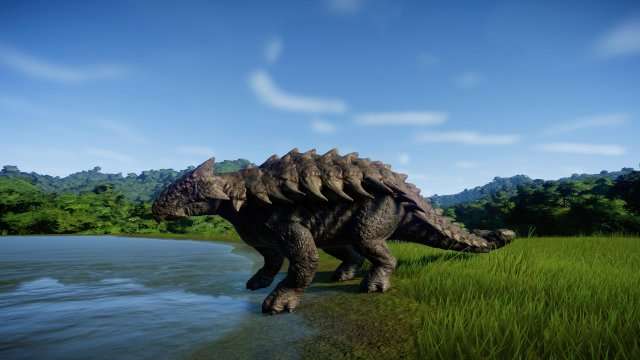
- Base Star Rating: 60 (100% Genome)
- Comfort %: 60
- Social Minimum: 0
- Social Maximum: 4
- Population Minimum: 0
- Population Maximum: 8
- Grass Area: 49
- Forest Area: 49
- Total Area: 98
Apatosaurus
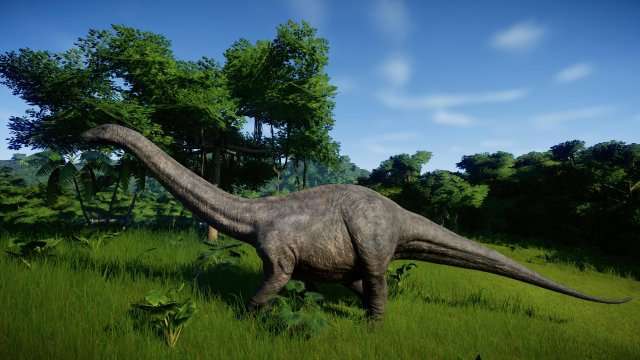
- Base Star Rating: 109 (74% Genome)
- Comfort %: 45
- Social Minimum: 3
- Social Maximum: 7
- Population Minimum: 0
- Population Maximum: 22
- Grass Area: 153
- Forest Area: 142
- Total Area: 295
Archaeonithomimus
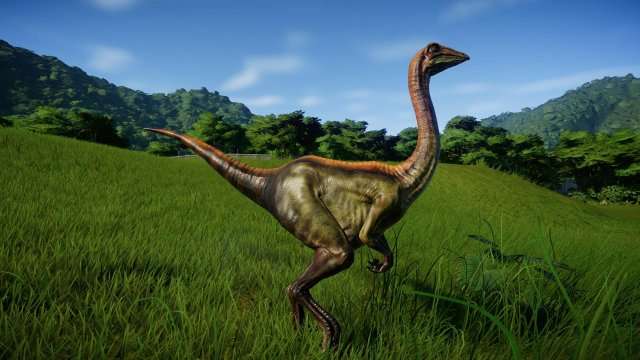
- Base Star Rating: 17 (100% Genome)
- Comfort %: 15
- Social Minimum: 0
- Social Maximum: 16
- Population Minimum: 0
- Population Maximum: 21
- Grass Area: 48
- Forest Area: 16
- Total Area: 64
Brachiosaurus

- Base Star Rating: 140 (100% Genome)
- Comfort %: 50
- Social Minimum: 1
- Social Maximum: 5
- Population Minimum: 0
- Population Maximum: 25
- Grass Area: 210
- Forest Area: 210
- Total Area: 420
Camarasaurus
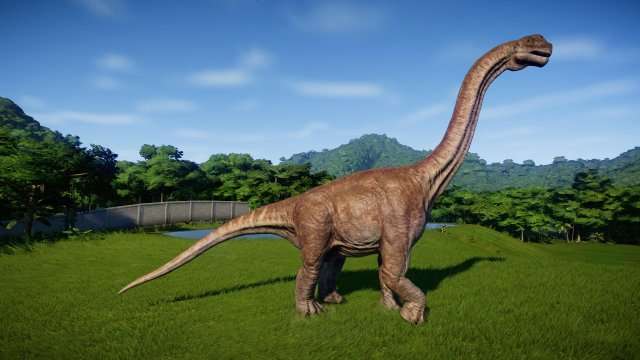
- Base Star Rating: 128 (100% Genome)
- Comfort %: 45
- Social Minimum: 2
- Social Maximum: 7
- Population Minimum: 1
- Population Maximum: 23
- Grass Area: 147
- Forest Area: 248
- Total Area: 395
Ceratosaurus
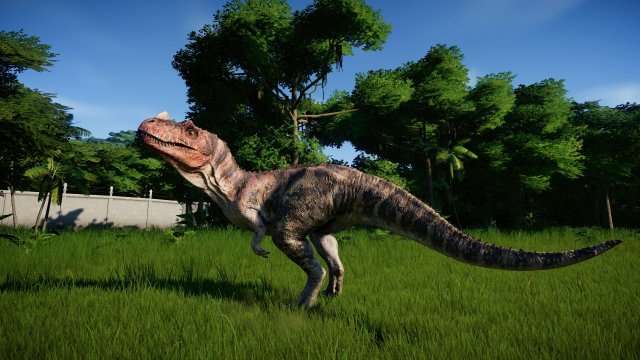
- Base Star Rating: 102 (100% Genome)
- Comfort %: 55
- Social Minimum: 0
- Social Maximum: 3
- Population Minimum: 0
- Population Maximum: 20
- Grass Area: 117
- Forest Area: 44
- Total Area: 221
Chasmosaurus

- Base Star Rating: 50 (100% Genome)
- Comfort %: 45
- Social Minimum: 3
- Social Maximum: 5
- Population Minimum: 3
- Population Maximum: 11
- Grass Area: 71
- Forest Area: 26
- Total Area: 97
Chrichtonsaurus

- Base Star Rating: 56 (96% Genome)
- Comfort %: 55
- Social Minimum: 0
- Social Maximum: 5
- Population Minimum: 0
- Population Maximum: 8
- Grass Area: 73
- Forest Area: 25
- Total Area: 98
Chungkingosaurus

- Base Star Rating: 42 (100% Genome)
- Comfort %: 50
- Social Minimum: 2
- Social Maximum: 12
- Population Minimum: 2
- Population Maximum: 18
- Grass Area: 120
- Forest Area: 97
- Total Area: 217
Corythosaurus

- Base Star Rating: 27 (100% Genome)
- Comfort %: 20
- Social Minimum: 2
- Social Maximum: 13
- Population Minimum: 2
- Population Maximum: 24
- Grass Area: 66
- Forest Area: 40
- Total Area: 106
Deinonychus

- Base Star Rating: 75 (100% Genome)
- Comfort %: 75
- Social Minimum: 3
- Social Maximum: 8
- Population Minimum: 0
- Population Maximum: 18
- Grass Area: 125
- Forest Area: 74
- Total Area: 199
Dilophosaurus
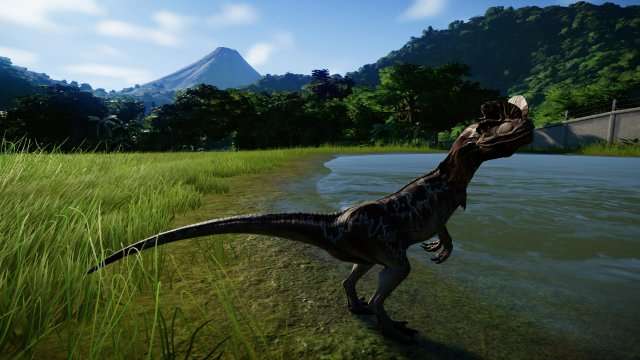
- Base Star Rating: 69 (100% Genome)
- Comfort %: 70
- Social Minimum: 1
- Social Maximum: 12
- Population Minimum: 0
- Population Maximum: 22
- Grass Area: 98
- Forest Area: 98
- Total Area: 196
Diplodocus
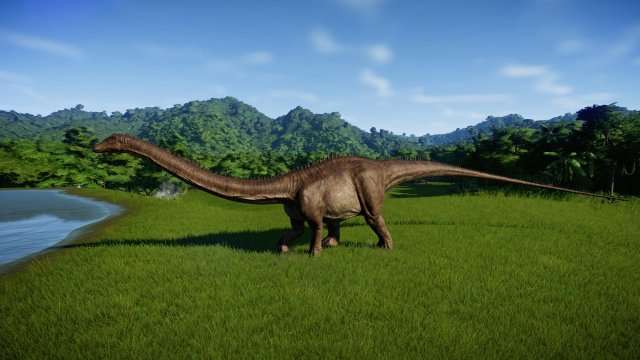
- Base Star Rating: 122 (100% Genome)
- Comfort %: 40
- Social Minimum: 1
- Social Maximum: 8
- Population Minimum: 0
- Population Maximum: 24
- Grass Area: 198
- Forest Area: 101
- Total Area: 299
Dracorex

- Base Star Rating: 32 (100% Genome)
- Comfort %: 25
- Social Minimum: 2
- Social Maximum: 8
- Population Minimum: 2
- Population Maximum: 12
- Grass Area: 77
- Forest Area: 47
- Total Area: 124
Edmontosaurus

- Base Star Rating: 23 (100% Genome)
- Comfort %: 20
- Social Minimum: 1
- Social Maximum: 15
- Population Minimum: 1
- Population Maximum: 25
- Grass Area: 80
- Forest Area: 54
- Total Area: 134
Gallimimus
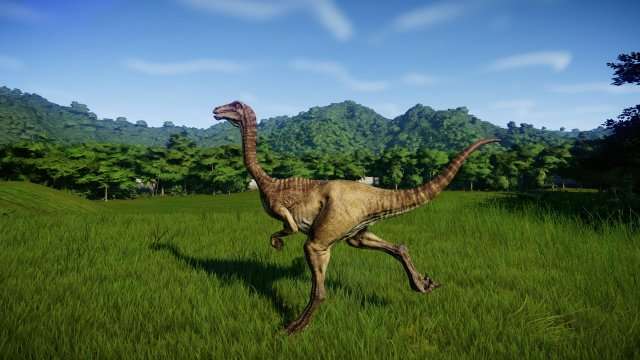
- Base Star Rating: 12 (92% Genome)
- Comfort %: 15
- Social Minimum: 0
- Social Maximum: 18
- Population Minimum: 0
- Population Maximum: 23
- Grass Area: 37
- Forest Area: 14
- Total Area: 51
Giganotosaurus
- Base Star Rating:
- Comfort %: 80
- Social Minimum: 1
- Social Maximum: 2
- Population Minimum: 1
- Population Maximum: 14
- Grass Area: 186
- Forest Area: 44
- Total Area: 230
Gigantspinosaurus
- Base Star Rating: 42 (83% Genome)
- Comfort %: 55
- Social Minimum: 4
- Social Maximum: 10
- Population Minimum: 4
- Population Maximum: 16
- Grass Area: 103
- Forest Area: 92
- Total Area: 195
Huayangosaurus
- Base Star Rating: 38 (100% Genome)
- Comfort %: 50
- Social Minimum: 1
- Social Maximum: 13
- Population Minimum: 1
- Population Maximum: 20
- Grass Area: 113
- Forest Area: 104
- Total Area: 217
Indominus Rex
- Base Star Rating: 273
- Comfort %: 90
- Social Minimum: 0
- Social Maximum: 1
- Population Minimum: 0
- Population Maximum: 10
- Grass Area: 231
- Forest Area: 75
- Total Area: 306
Kentrosaurus
- Base Star Rating: 31
- Comfort %: 55
- Social Minimum: 3
- Social Maximum: 11
- Population Minimum: 3
- Population Maximum: 14
- Grass Area: 131
- Forest Area: 108
- Total Area: 239
Maiasaura
- Base Star Rating: 32 (100% Genome)
- Comfort %: 25
- Social Minimum: 4
- Social Maximum: 12
- Population Minimum: 4
- Population Maximum: 23
- Grass Area: 76
- Forest Area: 62
- Total Area: 138
Majungasaurus
- Base Star Rating: 156
- Comfort %: 60
- Social Minimum: 0
- Social Maximum: 2
- Population Minimum: 0
- Population Maximum: 16
- Grass Area: 181
- Forest Area: 45
- Total Area: 226
Mamenchisaurus
- Base Star Rating: 157 (95% Genome)
- Comfort %: ~ 50%
- Social Minimum: 2
- Social Maximum: 4
- Population Minimum: 0
- Population Maximum: 25
- Enclosure Size: Large
- Grassland: Very Low
- Forest: Very High (Entire pen pretty much)
Metricanthosaurus
- Base Star Rating: 126 (100% Genome)
- Comfort %: —
- Social Minimum: 0
- Social Maximum: 2
- Population Minimum: 0
- Population Maximum: 18
- Grass Area: 154
- Forest Area: 73
- Total Area: 227
Muttaburrasaurus
- Base Star Rating: 37 (98% Genome)
- Comfort %: 30
- Social Minimum: 6
- Social Maximum: 12
- Population Minimum: 6
- Population Maximum: 20
- Grass Area: 72
- Forest Area: 59
- Total Area: 131
Nodosaurus
- Base Star Rating: 63 (100% Genome)
- Comfort %: —
- Social Minimum: 0
- Social Maximum: 4
- Population Minimum: 0
- Population Maximum: 7
- Grass Area: 28
- Forest Area: 26
- Total Area: 54
Pachycephalosaurus
- Base Star Rating: 39 (100% Genome)
- Comfort %: 25
- Social Minimum: 3
- Social Maximum: 6
- Population Minimum: 3
- Population Maximum: 10
- Grass Area: 105
- Forest Area: 50
- Total Area: 155
Parasaurolophus
- Base Star Rating: 36 (100% Genome)
- Comfort %: 30
- Social Minimum: 4
- Social Maximum: 14
- Population Minimum: 4
- Population Maximum: 21
- Grass Area: 76
- Forest Area: 52
- Total Area: 128
Pentaceratops
- Base Star Rating: 42 (73% Genome)
- Comfort %: 45
- Social Minimum: 3
- Social Maximum: 5
- Population Minimum: 3
- Population Maximum: 9
- Grass Area: 78
- Forest Area: 29
- Total Area: 107
Polacanthus
- Base Star Rating: 63 (96% Genome)
- Comfort %: 60
- Social Minimum: 0
- Social Maximum: 3
- Population Minimum: 0
- Population Maximum: 6
- Grass Area: 77
- Forest Area: 4
- Total Area: 81
Sauropelta

- Base Star Rating: 49 (61% Genome)
- Comfort %: 55
- Social Minimum: 0
- Social Maximum: 2
- Population Minimum: 0
- Population Maximum: 4
- Grass Area: 98
- Forest Area: 3
- Total Area: 101
Spinosaurus
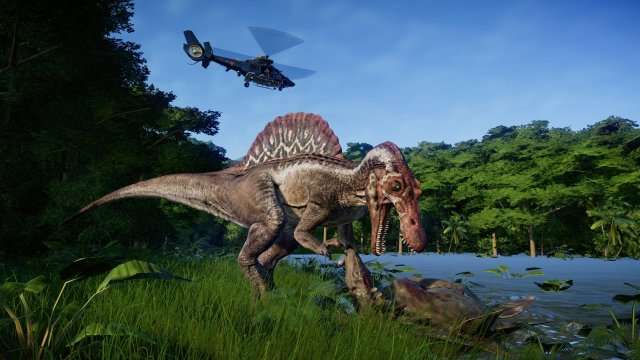
- Base Star Rating: 240 (100% Genome)
- Comfort %: 70
- Social Minimum: 0
- Social Maximum: 2
- Population Minimum: 0
- Population Maximum: 13
- Grass Area: 223
- Forest Area: 54
- Total Area: 277
Stegosaurus

- Base Star Rating: 47 (89% Genome)
- Comfort %: 55
- Social Minimum: 5
- Social Maximum: 9
- Population Minimum: 5
- Population Maximum: 15
- Grass Area: 137
- Forest Area: 111
- Total Area: 248
Struthiomimus

- Base Star Rating: 9 (100% Genome)
- Comfort %: 10
- Social Minimum: 0
- Social Maximum: 20
- Population Minimum: 0
- Population Maximum: 25
- Grass Area: 25
- Forest Area: 12
- Total Area: 37
Styracosaurus
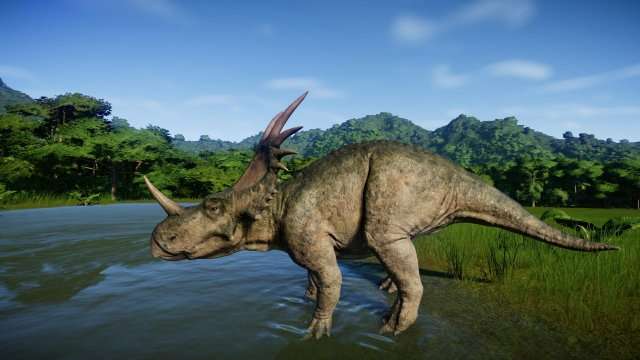
- Base Star Rating: 41 (100% Genome)
- Comfort %: 45
- Social Minimum: 2
- Social Maximum: 5
- Population Minimum: 2
- Population Maximum: 14
- Grass Area: 66
- Forest Area: 25
- Total Area: 91
Suchomimus
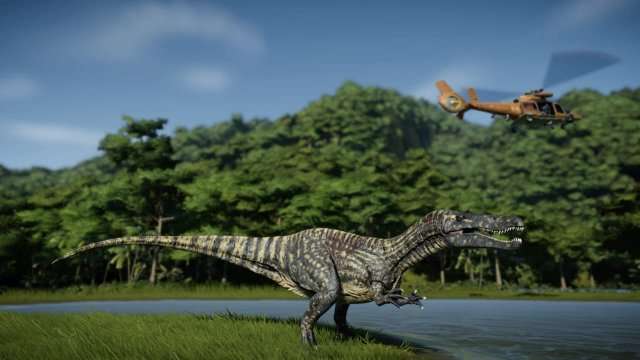
- Base Star Rating: 144
- Comfort %: 65
- Social Minimum: 0
- Social Maximum: 2
- Population Minimum: 0
- Population Maximum: 16
- Grass Area: 182
- Forest Area: 46
- Total Area: 228
Torosaurus
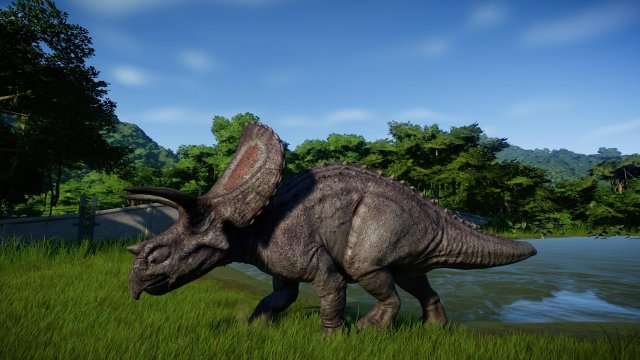
- Base Star Rating: 47 (100% Genome)
- Comfort %: 45
- Social Minimum: 2
- Social Maximum: 5
- Population Minimum: 2
- Population Maximum: 13
- Grass Area: 67
- Forest Area: 30
- Total Area: 97
Triceratops
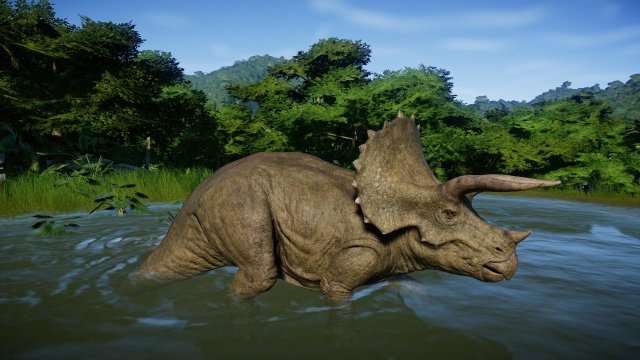
- Base Star Rating: 39 (100% Genome)
- Comfort %: 40
- Social Minimum: 1
- Social Maximum: 6
- Population Minimum: 1
- Population Maximum: 16
- Grass Area: 92
- Forest Area: 47
- Total Area: 139
Tsintaosaurus
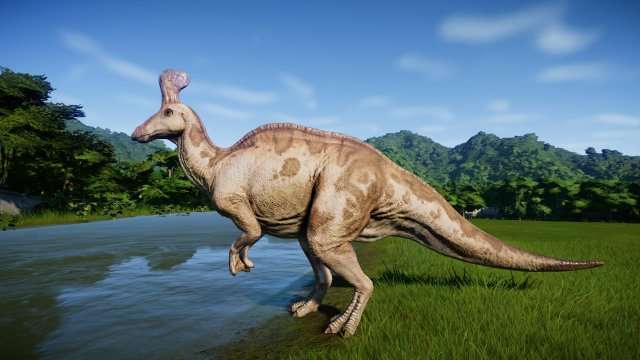
- Base Star Rating: 31 (92% Genome)
- Comfort %: 25
- Social Minimum: 4
- Social Maximum: 15
- Population Minimum: 4
- Population Maximum: 22
- Grass Area: 85
- Forest Area: 52
- Total Area: 137
Tyrannosaurus Rex

- Base Star Rating: 234 (100% Genome)
- Comfort %: 85
- Social Minimum: 0
- Social Maximum: 1
- Population Minimum: 0
- Population Maximum: 15
- Grass Area: 211
- Forest Area: 52
- Total Area: 263
Velociraptor
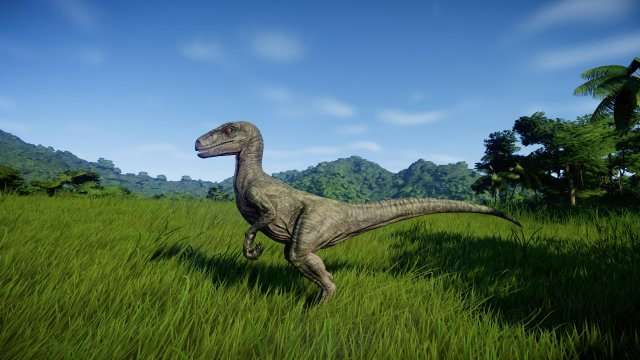
- Base Star Rating: 74 (100% Genome)
- Comfort %: 80
- Social Minimum: 2
- Social Maximum: 6
- Population Minimum: 0
- Population Maximum: 20
- Grass Area: 148
- Forest Area: 52
- Total Area: 200
Extra: My Combinations

This is how I set things up. These dinosaur groups can live together without issues. What they want is similar, and the type of land they need is compatible. This setup also lets you have one or two extra of the herding dinosaurs, so if one dies, you don’t have an immediate problem with them going wild.
The picture shows the size of the fenced-in areas I built for each group. Some of these areas are larger than what’s strictly needed (like the ones labeled Q and L), while others are just big enough for the dinosaurs to be okay with (like the ones labeled G, F, H, J, and R).
These were used on story islands, and Sandbox. The larger groups are, of course, not suited for small islands.
- A – Sauropelta (2)
- B – Tyrannosaurus Rex (1)
- C – Baryonx (2)
- D – Spinosaurus (2)
- E – Parasaurolophus (6) + Tsintaosaurus (6) + Muttaburrasaurus (6) + Edmontosaurus (3)
- F – Giganotosaurus (2)
- G – Velociraptor (6)
- H – Ceratosaurus (2 – 3)
- I – Diplodocus + Archaeorinthomimus / Struthiomimus / Gallimimus
- J – Mamenchisaurus (3) + Stegosaurus (5) + DIlophosaurus (4)
- K – Suchomimus (2)
- L – Majungasaurus (2)
- M – Pachycephalosaurus (4) + Huayangosaurus (3)
- N – Stygimoloch (4) + Chungkingosaurus (3)
- O – Torosaurus (2) + Kentrosaurus (4)
- P – Carnotaurus (2)
- Q – Allosaurus (1)
- R – Brachiosaurus (3) + Apatosaurus (4) + Gigantospinosaurus (4)
- S – Metricanthosaurus (2)
- T – Pentaceratops (4) + Nodosaurus (1)
- U – Sinoceratops (4) + Chrichtonsaurus (1)
- V – Chasmosaurus (4) + Anklyosaurus (1)
- W – Styracosaurus (4) + Polacanthus (1)
Note: I do not breed Camarasaurus, Deinonychus, Indominus Rex, Indoraptor or Dracorex in my parks due to their hard-to-please temperments.



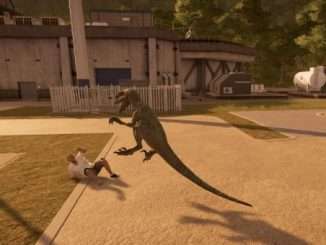
Be the first to comment